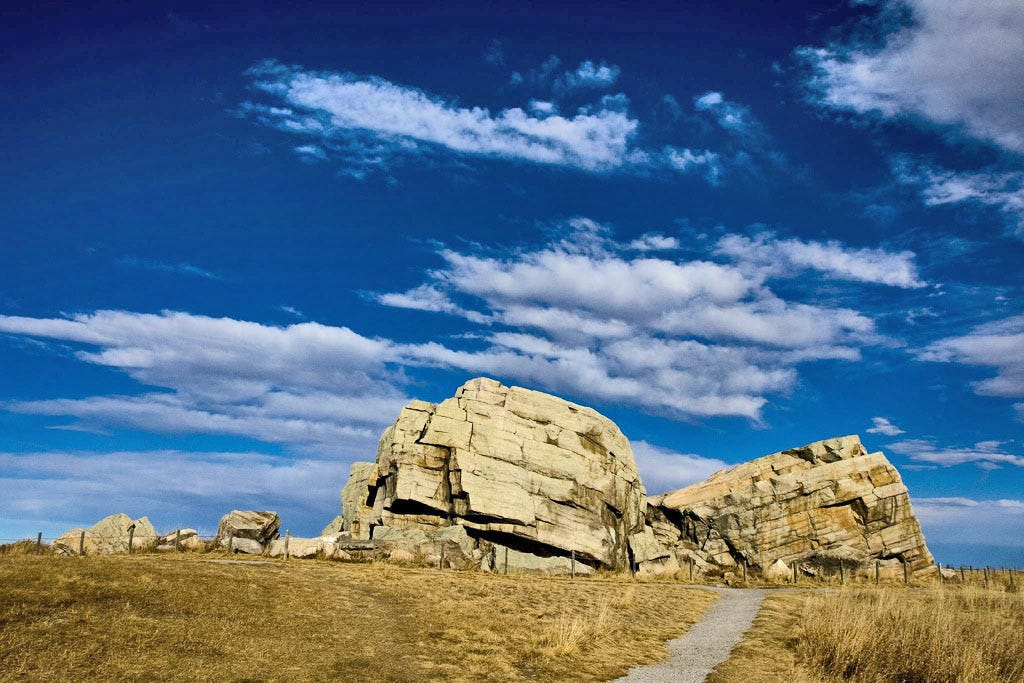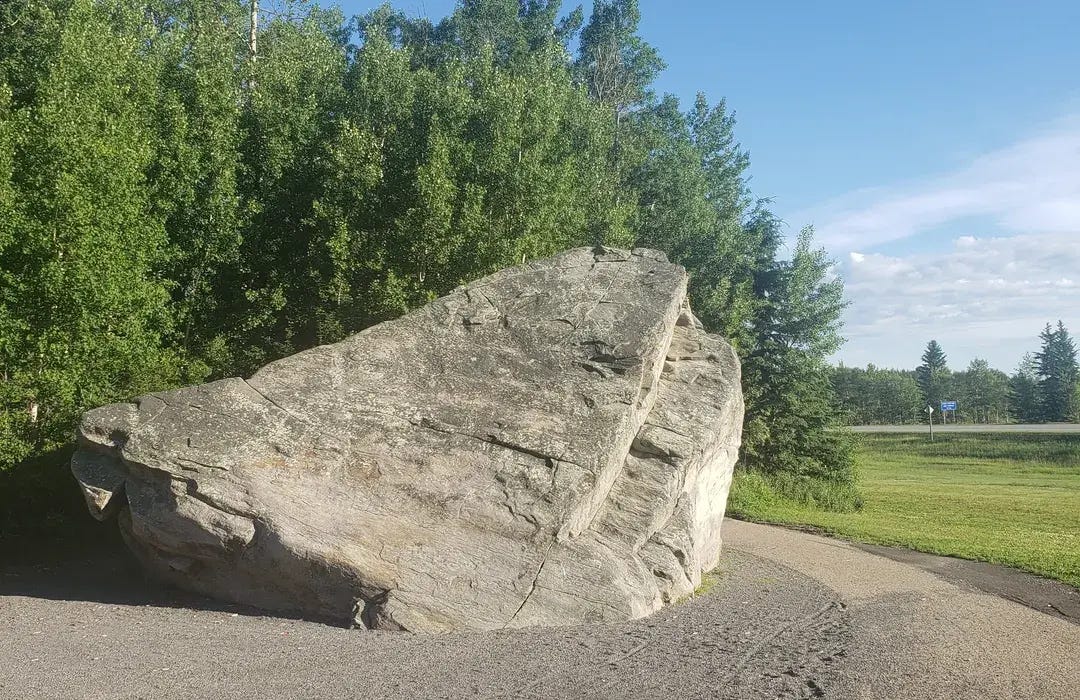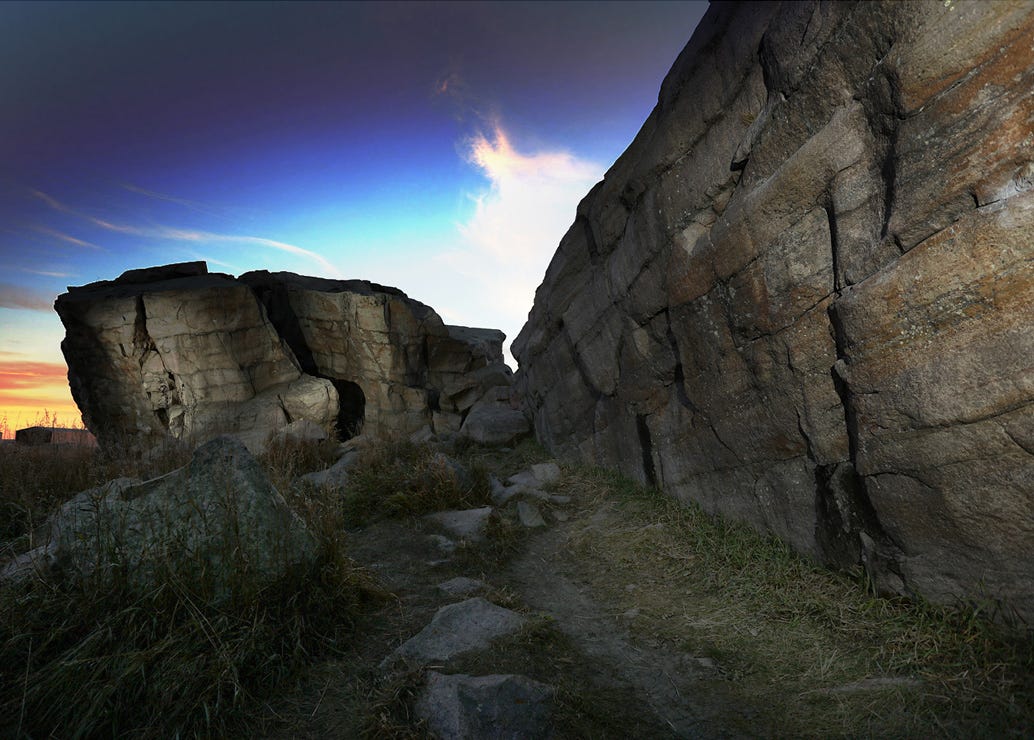I have always been fascinated by glacial erratics.
Thousands of years ago, these rocks, ranging in size from a metre to a three-storey building, were carried by glaciers over the landscape only to be dropped unceremoniously when the ice age ended.
Alberta has an abundance of erratics and they tell a fascinating story.
Between 12,000 to 17,000 years ago, a massive landslide occurred in the Tonquin Valley in the Rocky Mountains. Some experts believe it happened specifically on what is now called Mount Edith Cavell.
When this landslide happened, quartzite and quarzitic conglomerate rocks ranging in size from .3 metres to 41 metres, fell on a glacier. Carried by the movement of the glacier, the rocks were located between two ice sheets.
There was the Cordilleran Ice Sheet in the west and the Laurentide Ice Sheet in the east. Over centuries, the rocks were transported on top of the ice sheets and not ground down over time.
But then…the melting began.
At the end of the last ice age, the ice sheets started to retreat north and as they did, they dropped the erratics on the prairie.
While most of the rocks are quite small and no bigger than boulders, some are truly impressive.
One is the big rock located in Rocky Mountain House. It stands about five metres high and is a local landmark.
But the biggest is the Okotoks Erratic.
It weighs 18,200 tons and is 41 by 18 metres and nine metres high. Located about 18 kilometres south of Calgary, it was used as a landmark by the Blackfoot to show them the crossing over the Sheep River. They called it o’kotok, meaning rock, and it is from that the local community of Okotoks gets its name.
Considered a medicine rock for the First Nations, it contains pictographs and has been declared a Provincial Historic Site by Alberta.
The Blackfoot also have a story to explain why the rock is split down the middle.
One hot summer day, Napi, the supernatural trickster of the Blackfoot peoples, rested on the rock because the day was warm and he was tired. He spread his robe on the rock, telling the rock to keep the robe in return for letting Napi rest there. Suddenly, the weather changed and Napi became cold as the wind whistled and the rain fell. Napi asked the rock to return his robe, but the rock refused. Napi got mad and just took the clothing. As he strolled away, he heard a loud noise and turning, he saw the rock was rolling after him. Napi ran for his life. The deer, the bison and the pronghorn were Napi's friends, and they tried to stop the rock by running in front of it. The rock rolled over them. Napi's last chance was to call on the bats for help. Fortunately, they did better than their hoofed neighbours, and by diving at the rock and colliding with it, one of them finally hit the rock just right and it broke into two pieces.
It was once thought that the Okotoks Erratic was the largest in the world, but it is not. An erratic in Germany measures three kilometres by six kilometres and is nine metres thick. One in Alberta near Cooking Lake is believed to be ten square kilometres and is 10 metres thick.







(Fix the typo in the headline please.)